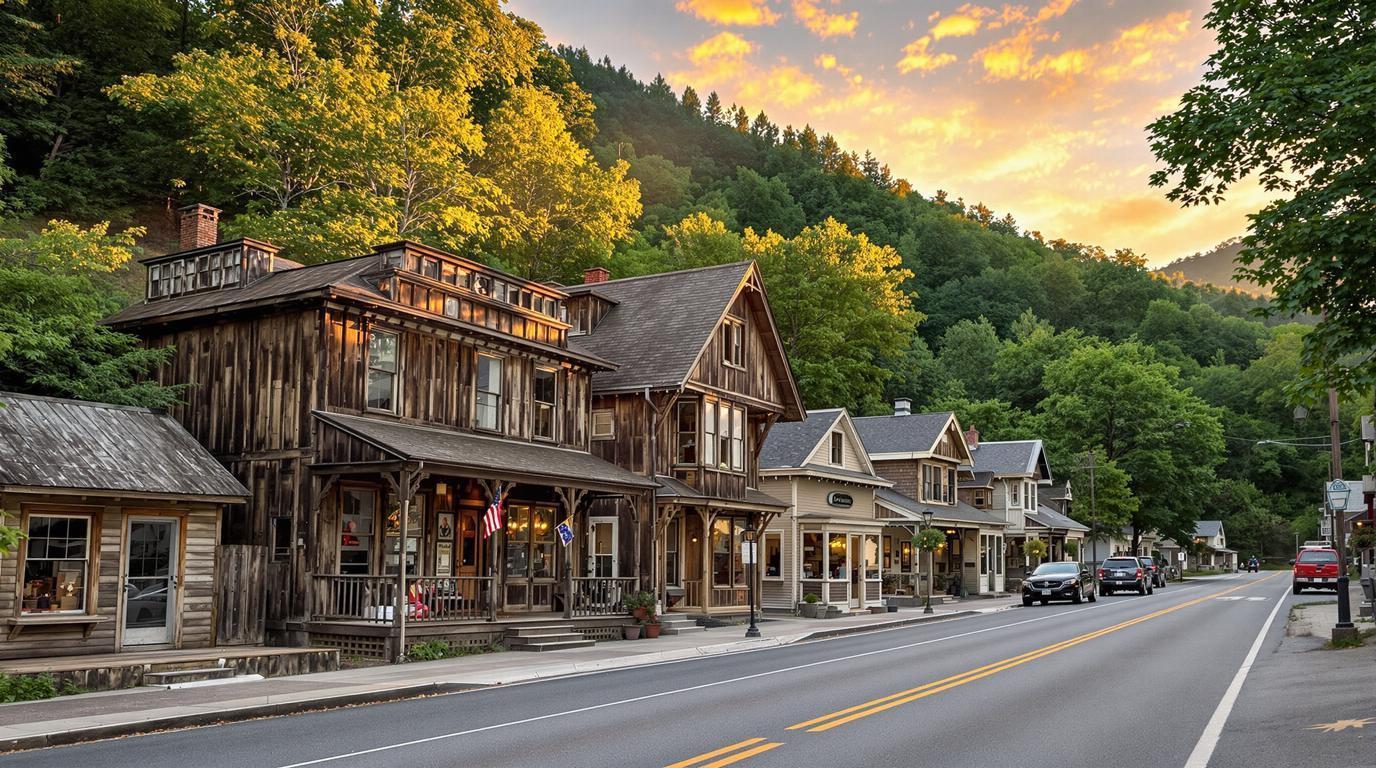When Asheville’s hotel occupancy dropped 7% and revenues plummeted 19% in spring 2025, smart travelers discovered something remarkable. While North Carolina’s famous mountain town struggles with overtourism and inflated prices, a 594-person West Virginia village offers everything Asheville promises – authentic Appalachian culture, Victorian architecture, and pristine mountain access – for half the cost and none of the crowds.
Thomas, West Virginia sits quietly in Tucker County, where the median age of 56.6 years tells the story of a community that values tradition over tourism dollars. Unlike Asheville’s 11 million annual visitors creating traffic jams along the Blue Ridge Parkway, Thomas maintains the intimate mountain town experience that disappeared from commercialized destinations decades ago.
The math is simple: skip the crowds choking Asheville’s downtown, and discover authentic Appalachian heritage where locals still wave from their porches and artisans create without Instagram audiences.
Why Asheville’s tourism boom created its own downfall
The overcrowding that’s destroying the experience
Asheville’s Blue Ridge Parkway now resembles a parking lot during peak seasons, with tour buses clogging narrow mountain roads designed for local traffic. The city’s economic dependence on tourism – accounting for 20% of Buncombe County’s GDP – has transformed authentic mountain culture into performative experiences designed for social media rather than genuine connection.
The price inflation that’s pricing out authenticity
Even with recent declines, Asheville’s hospitality costs remain inflated by mass tourism demand. Local restaurants cater to visitor expectations rather than preserving traditional Appalachian cuisine, while artisan shops focus on tourist trinkets over heritage crafts. The Grand Bohemian Hotel’s 50% occupancy in 2025 reflects how commercialization has disconnected the destination from its roots.
Thomas delivers the authentic mountain culture Asheville lost
Victorian architecture without the tourist buses
Thomas preserves its 19th-century mining heritage in buildings that house working families rather than gift shops. The town’s Main Street maintains its original character because economic necessity, not tourism boards, drives preservation decisions. Walking these streets feels like stepping into genuine Appalachian history rather than a themed experience.
Real artisans creating for their community
Local craftspeople in Thomas work with traditional techniques passed down through generations, creating pottery, woodwork, and textiles for neighbors and the occasional respectful visitor. Unlike Asheville’s gallery scene designed for tourist consumption, Thomas artisans preserve authentic Appalachian crafts traditions that serve their community’s daily needs.
The outdoor access that mass tourism hasn’t discovered
Pristine trails without the Instagram crowds
Thomas provides direct access to Monongahela National Forest through trailheads where you’ll encounter more wildlife than hikers. The town’s population density of just 116 people per square mile means outdoor spaces remain untouched by the foot traffic that’s eroded Asheville’s most popular hiking destinations.
Mountain fishing spots locals still consider secret
Stream access points around Thomas remain unmarked and unposted on social media, preserving the solitude that makes mountain fishing a meditative experience. Local fishing spots offer the peaceful connection with nature that Asheville’s crowded rivers can no longer provide.
The cost savings that make authentic travel possible
Accommodation costs that respect your budget
With Thomas’s median household income at $55,500, local lodging reflects community economics rather than tourism premiums. Bed and breakfasts charge rates 40-50% lower than comparable Asheville properties, while maintaining the personal hospitality that mass tourism destinations have abandoned for efficiency.
Dining experiences that celebrate local ingredients
Thomas restaurants serve traditional Appalachian cuisine using local ingredients because that’s what their community demands, not because it’s trendy. Menu prices reflect local economic realities, offering authentic mountain food experiences without the markup that tourism demand creates in destinations like Asheville.
Planning your authentic Appalachian experience
When to visit for maximum cultural immersion
Summer months offer the best weather for outdoor activities, while fall provides spectacular mountain colors without Asheville’s leaf-peeping crowds. Thomas’s community events happen organically throughout the year, providing genuine cultural experiences rather than scheduled tourist attractions.
How to travel respectfully in a preserved community
Support local businesses that serve the community year-round rather than seasonal tourist operations. Engage with residents respectfully, understanding that you’re visiting their home rather than a themed destination designed for your entertainment.
Thomas, West Virginia proves that authentic Appalachian culture still exists for travelers willing to skip the crowds and discover genuine mountain communities. While Asheville struggles with the consequences of overtourism, this small town offers the intimate cultural experience that mass destinations have lost forever.
Book your visit to Thomas before word spreads, and experience authentic Appalachian heritage the way it was meant to be discovered.
